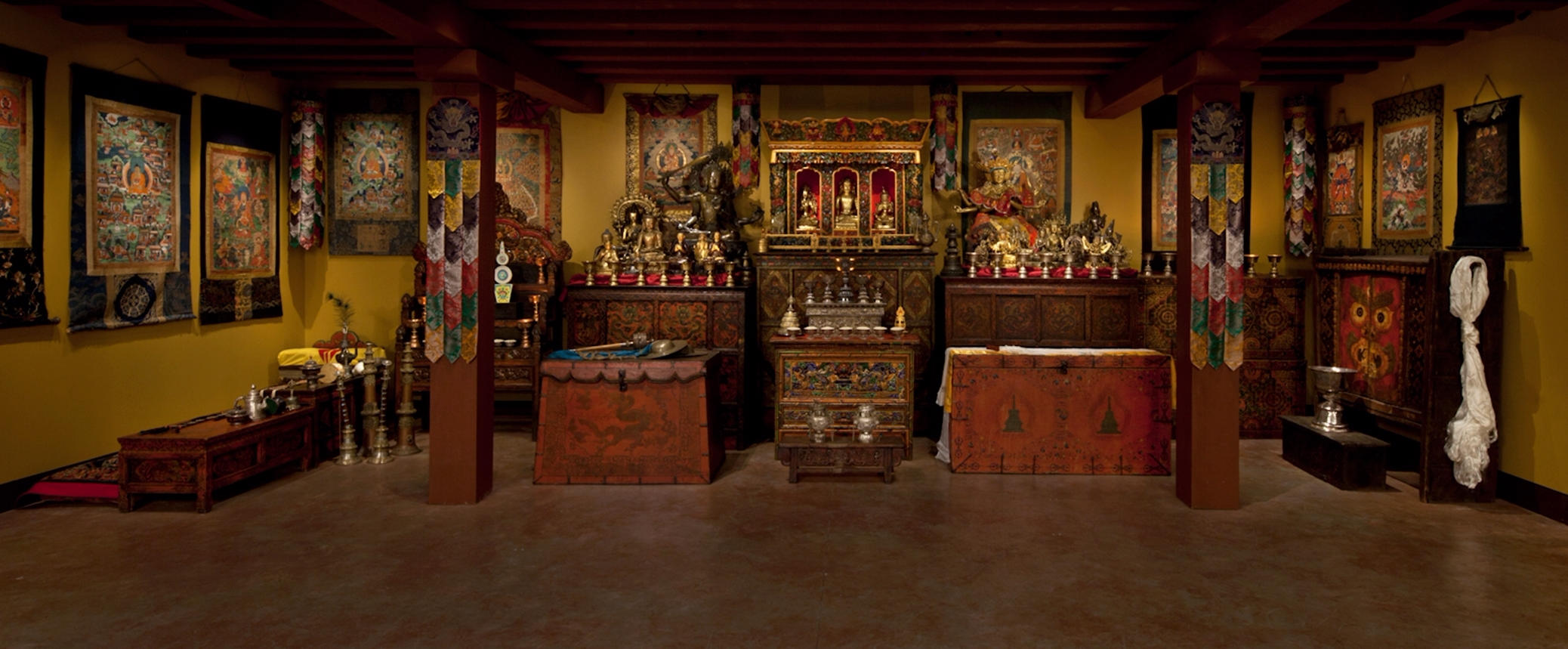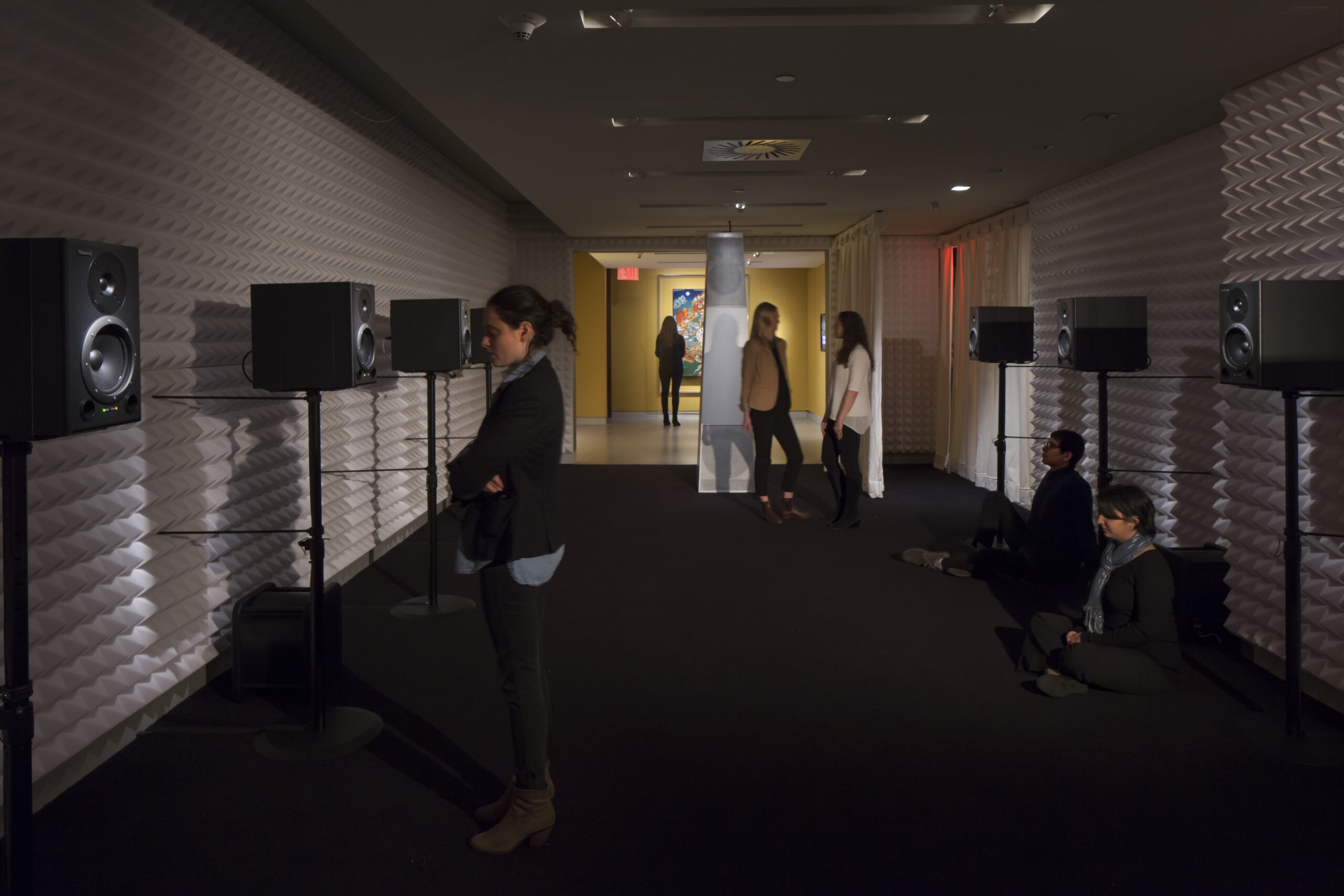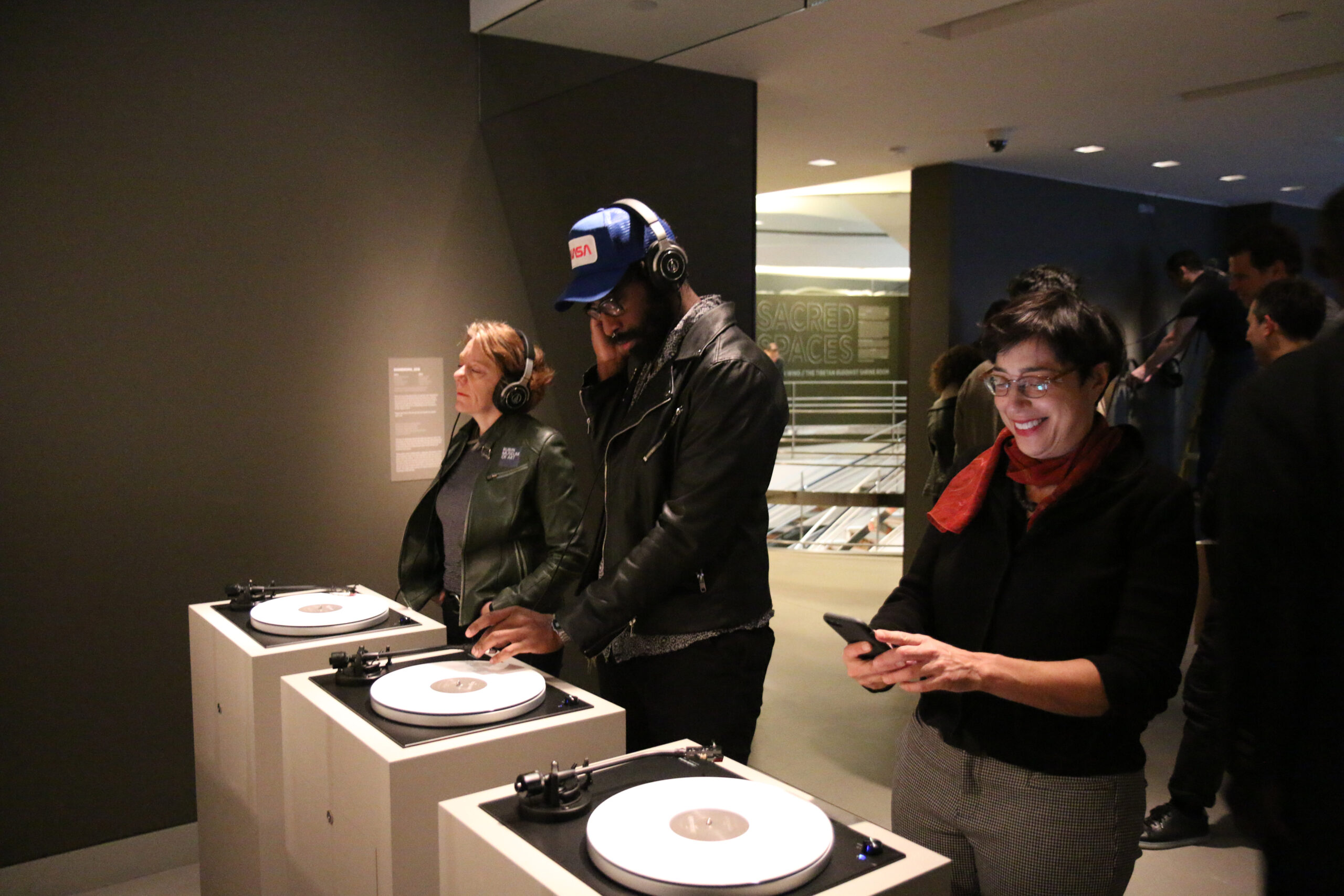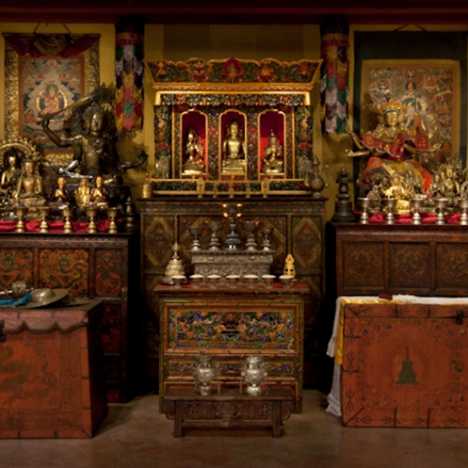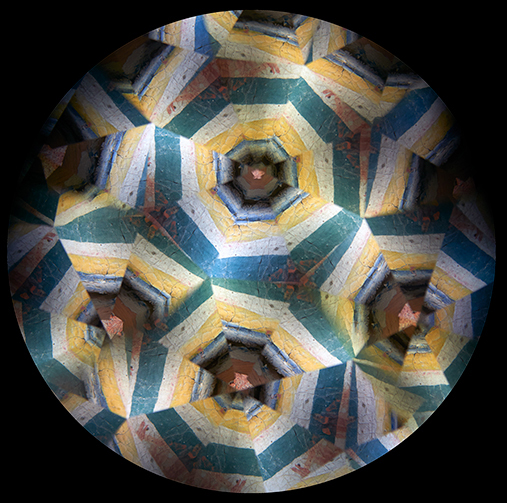
Sacred Spaces invites visitors to reflect on devotional activities in awe-inspiring places. For the second iteration of the exhibition, the Museum commissioned an installation by Soundwalk Collective in collaboration with sound artist Francisco López called Khandroma: Himalayan Wind, which transports visitors to the high Himalayas through sound.
In the spring and summer of 2016 Soundwalk Collective and Francisco López traveled to Upper Mustang, Nepal, to record the sounds in and surrounding the world’s highest monasteries—the flapping of prayer flags, the chanting of blessings, the echoes of wind from the valley below, and the interplay of sound and silence. These sound environments will be presented as a multi-channel audio installation through state-of-the-art speakers, creating an immersive and meditative experience. Visitors can also interact directly with Khandroma by playing individual tracks from the soundscapes at dedicated listening stations. A video installation filmed by Soundwalk Collective’s founder Stephan Crasneanscki complements the audio experience by showing cyclic, kaleidoscopic imagery of prayer wheels and prayer flags evoking the notion of repetition and permanent change.
Visitors can also enter the Tibetan Buddhist Shrine Room, an immersive installation inspired by a traditional shrine that would be used for offering, devotion, prayer, and contemplation. Art and ritual objects are presented as they would be in an elaborate household shrine.
Sacred Spaces and Himalayan Wind are made possible through the generous support of Audio-Technica. Additional support has been provided by Christopher J. Fussner, The Hoch 2009 Charitable Lead Trust, and Rasika and Girish Reddy, as well as Bob and Lois Baylis, Ashwini and Anita Gupta, Preethi Krishna and Ram Sundaram, William and Pamela Michaelcheck, Tulku Tsultrim Pelgyi, Manoj and Rita Singh, Venkat and Pratima Srinivasan, the Zakaria Family Foundation, and contributors to the 2015/2016 Exhibitions Funds.

